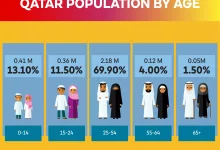Population of North Korea: An In-Depth Analysis
North Korea, officially known as the Democratic People’s Republic of Korea (DPRK), is a country located on the northern half of the Korean Peninsula in East Asia. It is bordered by China to the north, Russia to the northeast, and South Korea to the south, with the Yellow Sea to the west and the Sea of Japan to the east. While North Korea is often discussed in the context of its political regime, military presence, and nuclear ambitions, understanding its population dynamics offers vital insights into the country’s socio-economic conditions, health status, and overall development.
Demographics Overview
As of the most recent estimates in 2024, the population of North Korea is approximately 25 million people. The population density is relatively low, with about 215 people per square kilometer. However, this figure varies significantly across different regions of the country. Urban areas, particularly the capital city Pyongyang, are significantly more densely populated than rural regions.
The population is predominantly ethnically homogeneous, with around 99% of the citizens identifying as ethnically Korean. There are small communities of Chinese, Japanese, and other ethnic groups; however, these numbers are minimal. The official language is Korean, which reflects the cultural and historical heritage of the Korean people.
Population Growth and Structure
The population growth rate in North Korea has experienced fluctuations over the years. The growth rate has slowed down, currently estimated at about 0.5% annually. Factors contributing to this slow growth include low birth rates, high mortality rates, and significant emigration. The total fertility rate is estimated at around 1.9 children per woman, which is below the replacement level of 2.1. This decline in birth rates can be attributed to several socio-economic factors, including urbanization, economic hardship, and changes in societal attitudes towards family size.
North Korea’s age structure presents a significant demographic challenge. A substantial portion of the population is concentrated in the working-age group, which constitutes approximately 70% of the total population. The youth population (aged 0-14) accounts for about 16% of the population, while the elderly (aged 65 and older) represent about 10%. The aging population is a growing concern, as it places increased pressure on social services and economic resources.
Health and Life Expectancy
Health outcomes in North Korea have been a topic of concern, influenced by various factors, including economic conditions, access to healthcare, and nutrition. Life expectancy in North Korea is estimated at around 72 years for men and 75 years for women, which is lower than that of many neighboring countries. Poor nutrition, particularly in recent decades, has significantly impacted the health and longevity of the population.
The country has faced numerous challenges, including chronic food shortages and a healthcare system that struggles to provide adequate services. Malnutrition is prevalent, especially among children, which can lead to stunted growth and developmental issues. According to the World Food Programme, about 40% of North Korean children are estimated to be stunted due to malnutrition.
Urbanization and Migration Trends
Urbanization in North Korea has been limited compared to other countries in the region. As of 2024, approximately 61% of the population resides in urban areas. Pyongyang, the capital, is the largest city and serves as the political, economic, and cultural center of the country. Other significant urban centers include Hamhung, Chongjin, and Nampo.
Internal migration is highly regulated in North Korea, with the government controlling the movement of people between rural and urban areas. Despite these restrictions, there are reports of unofficial migration as people seek better economic opportunities. However, such movements often come with risks, including the possibility of punishment for defying government policies.
Economic Factors Influencing Population Dynamics
The economic situation in North Korea significantly influences population dynamics. The country has faced severe economic challenges, particularly since the collapse of the Soviet Union in the early 1990s. The ensuing economic crisis resulted in widespread famine and hardship, leading to significant loss of life and a decline in population growth.
North Korea’s economy remains largely state-controlled, with agriculture, manufacturing, and military spending dominating the economic landscape. The focus on military expenditure often comes at the expense of social services and infrastructure, including healthcare and education. This economic model has contributed to a cycle of poverty and malnutrition, which further complicates population growth and health outcomes.
Conclusion
The population of North Korea presents a complex and multifaceted picture, shaped by historical, political, and economic factors. With approximately 25 million inhabitants, the country faces significant demographic challenges, including an aging population, low birth rates, and poor health outcomes. The ongoing economic difficulties, coupled with government restrictions on movement and information, hinder the population’s ability to thrive and adapt to changing circumstances.
Understanding the demographics of North Korea is crucial for grasping the broader context of the country’s socio-political landscape and potential future developments. Continued research and analysis are necessary to monitor these trends and their implications for the people of North Korea and the region as a whole.

